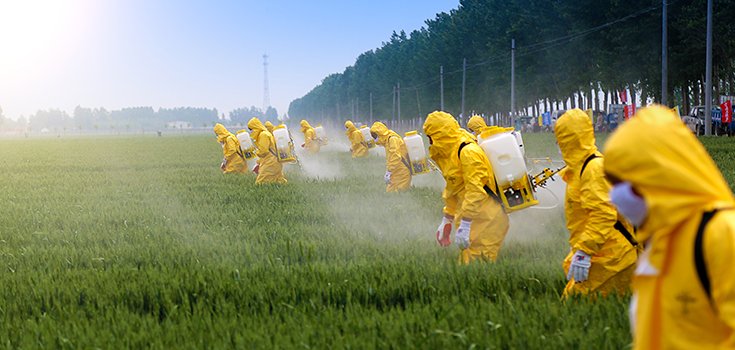EPA Restricts Use of Controversial Dicamba Herbicide

The U.S. Environmental Protection Agency (EPA) and pesticide makers have reached an agreement to impose restrictions on products containing dicamba, a chemical that has drawn thousands of complaints from farmers about crop damage. [1]
Per the agreement, dicamba products sold for the 2018 growing season will be classified as “restricted use,” meaning only certified applicators with special training will be able to apply the products to crops. Additionally, dicamba spraying will only be permitted when winds are less than 16 kilometers, or just under 10 miles per hour. Spraying will be restricted to certain times of day, and farmers will be required to keep records of dicamba use.
Dicamba spraying has increased as farmers apply more and more of the chemical to soybeans and cotton crops that are genetically engineered to withstand it, and as weeds are becoming increasingly resistant to other herbicides, including glyphosate. However, non-GMO crops are highly susceptible to damage caused by dicamba.
Two states – Arkansas and Missouri – temporarily banned dicamba in the summer of 2017 amid complaints from farmers that the substance vaporized and damaged crops not genetically modified to withstand the chemical. Dicamba drift resulted in heavy crop losses for farmers in the Bootheel region of Missouri.

A Penn State University study published in 2015 found that herbicides containing dicamba drift to adjacent farms and fields, causing catastrophic damage to non-targeted plants and pollinator insects.
The EPA’s decision to restrict dicamba use was partly due to reports that dicamba has drifted into forestland, where it is harming trees. [2]
Some authorities point out that placing dicamba on the EPA’s restricted-use list does not completely mitigate its risks. Denise O’Brien, chair of the Pesticide Action Network board, explained:
“These new restrictions don’t do nearly enough to address the problem of dicamba drift damage. Farmers and others will continue to be hurt by dicamba drift with these weak rules that give the false impression that EPA is doing something to address dicamba drift. A drift-prone herbicide like dicamba should never have been let on to the market in the first place. Monsanto and other corporations have put farmers in this position, but so far they have not been held accountable for the problems caused by their products.” [2]
Monsanto actually asked the EPA to change the label on its “Xtendimax Vaporgrip” dicamba product to “restricted use only,” and maintains that when applied properly, dicamba is safe to use. [3]
Vice president of global strategy Scott Partridge said:
“We looked at the off-target movement and we looked at the lack of buffer zones or wrong nozzles and wrong boom height. What we realized very quickly was that all of those factors are solved by better training and better education.” [3]
Despite the chemical’s new classification, Partridge said high demand for Xtendimax is expected to double the sale of the herbicide during the 2018 harvest.
Additional Sources:
[1] Chemical & Engineering News
[2] Modern Farmer
